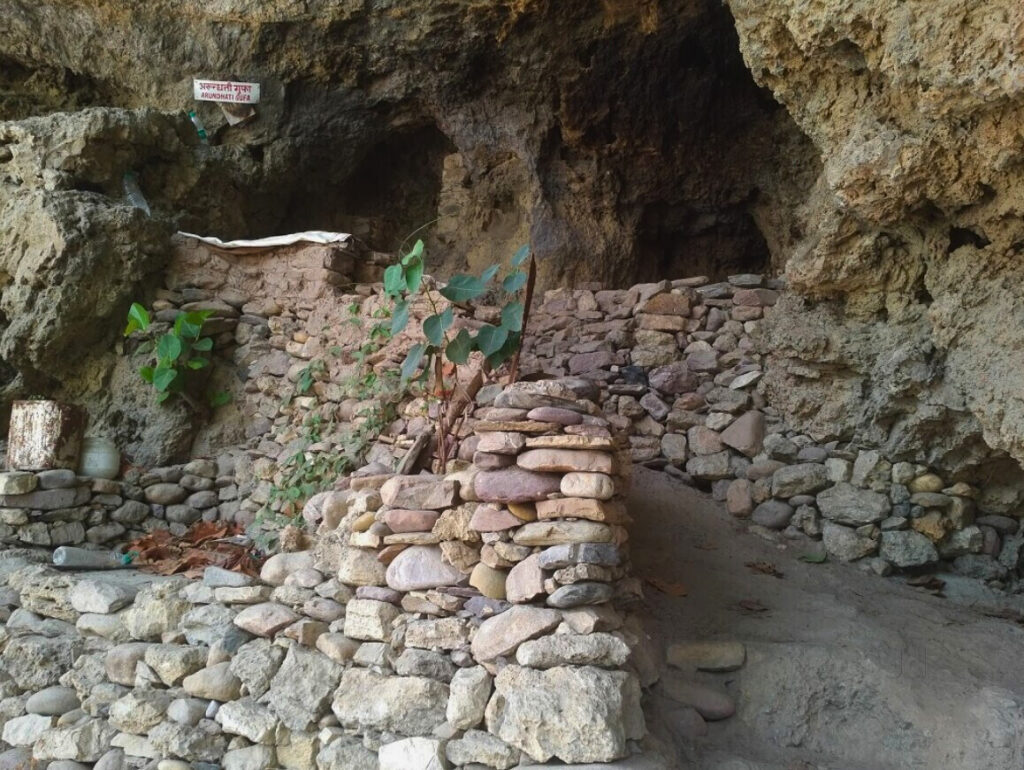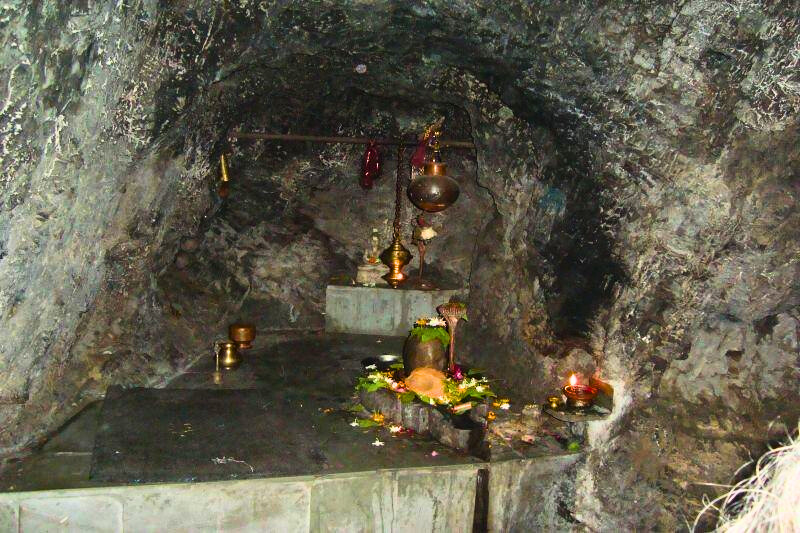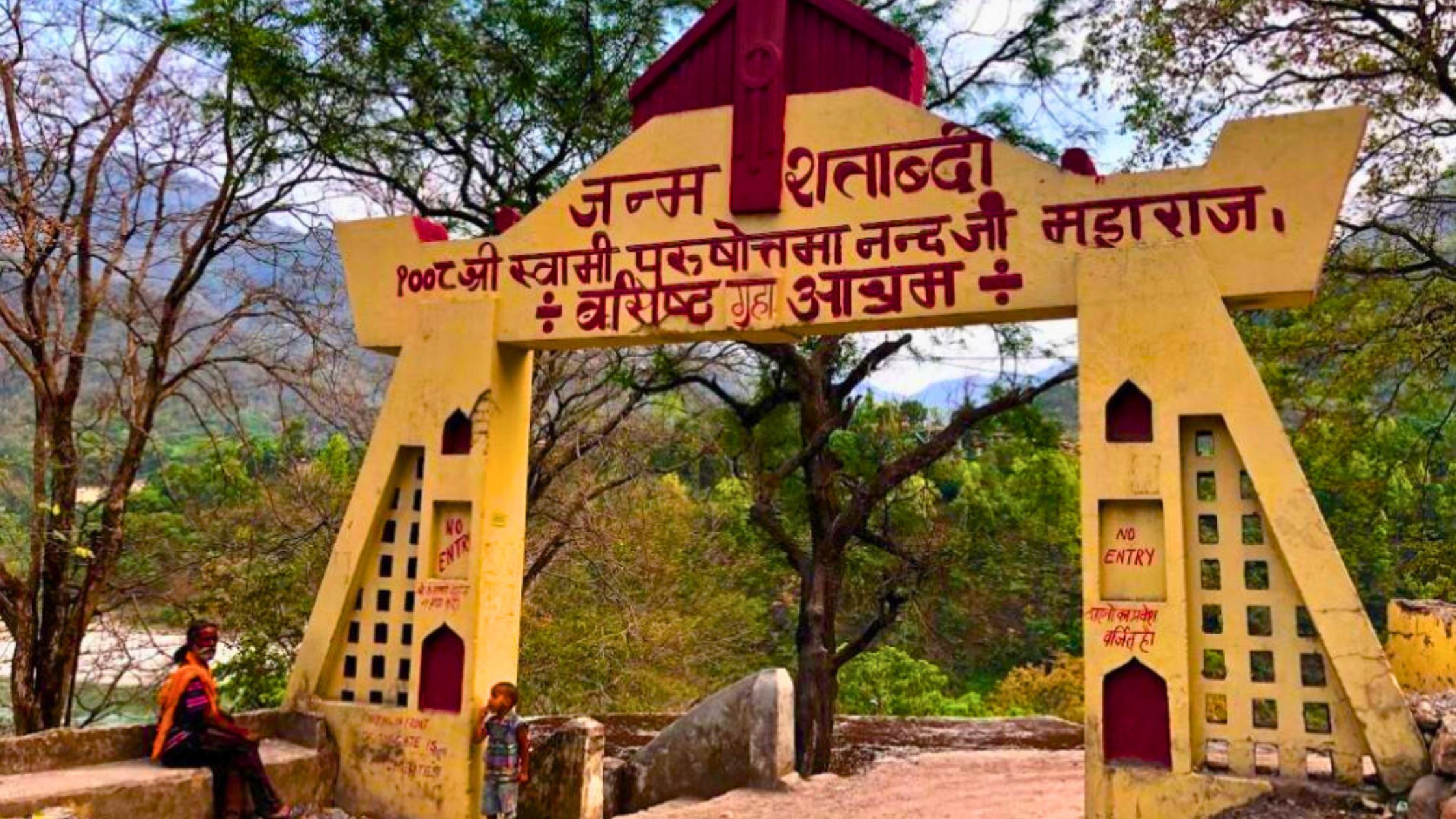Vashishta Gufa: A Sacred Haven of Meditation and Spirituality
Nestled in the serene and picturesque landscapes of Uttarakhand, Vashishta Gufa (Cave) is a place of profound spiritual significance. Located approximately 25 kilometers from Rishikesh, this ancient cave is believed to have been the meditation site of Sage Vashishta, one of the revered Saptarishis (seven great sages) of Hindu mythology. The cave, surrounded by dense forests and overlooking the holy Ganges River, offers a tranquil retreat for seekers of meditation, spirituality, and inner peace.
Vashishta Gufa is not just an ordinary cave; it is a sanctum steeped in history, mythology, and the vibrations of deep meditation. Over centuries, countless sages, yogis, and spiritual aspirants have visited this sacred place to experience divine connection and self-realization.
Historical and Mythological Significance
The cave is named after Sage Vashishta, one of the most respected rishis in Hindu tradition and the Rajguru (royal priest) of the Ikshvaku dynasty, which included Lord Rama. According to Hindu scriptures, Sage Vashishta was a great sage who possessed deep knowledge of the Vedas and was known for his wisdom, patience, and devotion to Dharma.
As per legend, after the tragic demise of his sons, Sage Vashishta, overcome with sorrow, sought solace in deep meditation. Guided by divine will, he chose this cave as his abode and meditated here for several years. During his meditation, he achieved profound spiritual realization, which is why the cave has since been regarded as a powerful energy center for meditation.
Additionally, the Saptarishi tradition holds that Rishi Vashishta, along with the other six sages, played a crucial role in preserving and passing down Vedic wisdom. His association with this cave enhances its sanctity, drawing spiritual seekers from around the world.
Location and Accessibility
Vashishta Gufa is situated on the banks of the Ganges River, about 25 kilometers from Rishikesh on the Rishikesh-Badrinath Highway. The journey to the cave is as spiritually enriching as the destination itself. The road leading to the cave offers breathtaking views of the Ganges, lush green forests, and the majestic Himalayan foothills.
To reach the cave, one must descend around 200 steps from the main road, passing through a dense forest that enhances the sense of solitude and connection with nature. The walk down is not very difficult, but it does require some caution, especially for elderly visitors. The cave is well-maintained by Swami Purushottamananda Trust, which ensures that the sanctity and cleanliness of the place are preserved.
Experience of Visitors and Spiritual Seekers
For centuries, Vashishta Gufa has been a retreat for sadhus, yogis, and spiritual seekers who come here to meditate and seek enlightenment. The profound silence of the cave, coupled with the high energy vibrations, allows one to experience deep meditation effortlessly.
1. Meditation Experience: The cave is an ideal place for those who practice meditation, as the vibrations within it facilitate deep concentration and inner stillness. Many visitors have reported experiencing divine bliss, heightened awareness, and a sense of unity with the universe while meditating here.
2. Pilgrimage and Devotion: For Hindu devotees, visiting this cave is a pilgrimage, as it is associated with Sage Vashishta, one of the great seers of ancient India. The presence of the Shivalinga inside the cave adds to its sacredness, and many people offer prayers and spend time in quiet reflection.
3. Connection with Nature: The surroundings of Vashishta Gufa are equally mesmerizing. The thick forests, melodious chirping of birds, and the flowing Ganga create a natural symphony that soothes the mind and soul. The serene environment makes it a perfect place for rejuvenation and inner healing.

Structure and Atmosphere
Unlike many caves that are dark and damp, Vashishta Gufa exudes a unique aura of peace and divinity. The cave is about 60 feet deep and 10 feet high, making it a comfortable space for meditation. The entrance of the cave is small, but as one steps inside, the ambiance transforms into a haven of stillness and serenity.
Inside the cave, there is a Shivalinga at the end, which symbolizes the presence of Lord Shiva, the Adi Yogi (the first yogi). The atmosphere is charged with spiritual energy, and the stillness inside the cave allows visitors to meditate deeply without distractions. The only source of light inside the cave is a dim lamp, which further enhances the meditative experience.
Outside the cave, there is an ashram and a small temple dedicated to Sage Vashishta. A few meters away, the Ganga River flows gracefully, adding to the divine charm of the location. Many visitors prefer to spend time near the riverbanks, soaking in the peaceful vibrations of the holy waters.
Relevance in Contemporary Times
In the modern world, where stress, anxiety, and distractions dominate daily life, places like Vashishta Gufa serve as a spiritual oasis. Meditation has gained worldwide recognition for its benefits on mental and physical health, and this cave provides an unparalleled atmosphere for such practices.
Many yoga practitioners, spiritual teachers, and seekers visit this cave to experience deep meditation away from the chaos of urban life. The cave is particularly significant for those who follow Vedantic teachings, yogic traditions, and the philosophy of self-realization.
Additionally, several ashrams and retreat centers in Rishikesh organize meditation retreats that include visits to Vashishta Gufa, allowing participants to experience the profound stillness and inner awakening that the cave offers.
Challenges and Preservation Efforts
While Vashishta Gufa remains largely untouched by commercialization, there are concerns about maintaining its sanctity. Increased footfall, environmental degradation, and improper visitor behavior could pose a threat to this sacred site.
Efforts are being made by the Swami Purushottamananda Trust to preserve the cave’s sanctity by maintaining cleanliness, regulating visitor activities, and promoting responsible tourism. Devotees and visitors are encouraged to respect the place by maintaining silence, avoiding littering, and embracing the spirit of meditation and reverence.

Nearby Attractions Around Vashishta Cave
1. Rishikesh – The Yoga Capital of the World
Distance: ~25 km from Vashishta Cave
Why Visit?
Rishikesh is known for its spiritual atmosphere, yoga centers, ashrams, and adventure activities. It is a significant pilgrimage site, attracting thousands of devotees and tourists every year.
Key Attractions in Rishikesh:
A. Triveni Ghat (Spiritual Significance)
- A famous riverbank on the Ganges, known for its evening Ganga Aarti, where hundreds of lamps float on the river.
- Believed to be the meeting point of three sacred rivers: Ganga, Yamuna, and Saraswati.
- A perfect place for a peaceful evening and spiritual cleansing.
B. Lakshman Jhula & Ram Jhula (Iconic Bridges)
- Lakshman Jhula: A 450-ft long suspension bridge across the Ganga, linked to Hindu mythology where Lakshman (brother of Lord Rama) is said to have crossed the river on a jute rope.
- Ram Jhula: Another suspension bridge similar to Lakshman Jhula, offering breathtaking views of the Ganges and connecting major temples and ashrams.
C. Parmarth Niketan Ashram (Spiritual & Yoga Center)
- One of the largest and most famous ashrams in Rishikesh, offering yoga, meditation, and spiritual discourses.
- Hosts a daily Ganga Aarti, attended by thousands of devotees.
D. Beatles Ashram (Maharishi Mahesh Yogi Ashram)
- Known as the place where The Beatles stayed in 1968 to learn Transcendental Meditation.
- Now abandoned but decorated with Beatles-themed graffiti, attracting music lovers and spiritual seekers.
2. Neelkanth Mahadev Temple – A Sacred Shiva Shrine
Distance: ~30 km from Vashishta Cave (~1-hour drive)
Why Visit?
- Dedicated to Lord Shiva, this temple is located at a height of 1330 meters, surrounded by dense forests and the Nar-Narayan mountains.
- The temple is associated with the legend of Samudra Manthan (churning of the ocean), where Shiva consumed the poison (Halahala), turning his throat blue (Neelkanth).
- Pilgrims often trek to the temple, enjoying panoramic views and a divine atmosphere.
3. Shivpuri – Adventure Hub
Distance: ~10 km from Vashishta Cave
Why Visit?
Shivpuri is a paradise for adventure lovers, offering:
- River Rafting – One of the most thrilling rapids in India, ranging from Grade I to Grade IV.
- Camping by the Ganges – Many camps offer riverside stays with bonfires and music.
- Trekking & Nature Walks – Enjoy scenic jungle trails and hill treks.
- Bungee Jumping & Cliff Jumping – Experience one of India’s highest bungee jumps (83m) at Jumpin Heights.
4. Kunjapuri Devi Temple – Sunrise Viewpoint & Goddess Shrine
Distance: ~28 km from Vashishta Cave (~1-hour drive)
Why Visit?
- One of the Shakti Peethas, dedicated to Goddess Durga.
- Offers breathtaking sunrise views over the Himalayas and Rishikesh.
- A 300-step climb leads to the temple, rewarding visitors with majestic panoramic views.
5. Rajaji National Park – Wildlife Safari
Distance: ~35 km from Vashishta Cave (~1.5-hour drive)
Why Visit?
- A vast wildlife reserve (820 sq km), home to elephants, tigers, leopards, deer, and over 300 bird species.
- Offers jeep safaris & nature walks, providing an immersive experience in Himalayan wildlife.
- Best time to visit: November to June.
6. Phool Chatti Ashram – Peaceful Retreat
Distance: ~5 km from Vashishta Cave
Why Visit?
- A traditional ashram offering yoga, meditation, and spiritual retreats.
- Located in a tranquil area near the Ganges, perfect for relaxation and introspection.
- Provides week-long courses on yogic philosophy, chanting, and Ayurveda.
For more information about nearby attractions you can visit : click here
FAQs About Vashishta Gufa
1. Is there an entry fee for visiting Vashishta Gufa?
No, entry to the cave is free, but donations to the ashram are welcome.
2. What are the visiting hours?
The cave is usually open from sunrise to sunset, but it is advisable to visit during daylight hours.
3. Can anyone meditate in the cave?
Yes, anyone can meditate inside the cave, regardless of their religious beliefs.
4. Is photography allowed inside the cave?
No, photography is generally not allowed inside to maintain the sanctity and peaceful atmosphere.
5. Are there accommodation facilities nearby?
Yes, there is an ashram near the cave that offers simple accommodations for spiritual seekers.
Conclusion
Vashishta Gufa is more than just a historical or religious site; it is a gateway to inner transformation. It is a place where the physical world fades into the background, allowing one to connect with the self and the divine. The cave’s rich mythology, breathtaking surroundings, and deep spiritual energy make it one of the most revered meditation spots in India.
For seekers, yogis, and tourists alike, a visit to Vashishta Gufa is a journey into the depths of silence and self-awareness. Whether one is looking for peace, enlightenment, or simply an escape from the chaos of modern life, this sacred cave offers a unique and unforgettable experience. If you ever find yourself in Rishikesh, a visit to Vashishta Gufa is a must for an encounter with the ancient wisdom and tranquility that have drawn sages and spiritual aspirants for centuries.




Leave a Reply